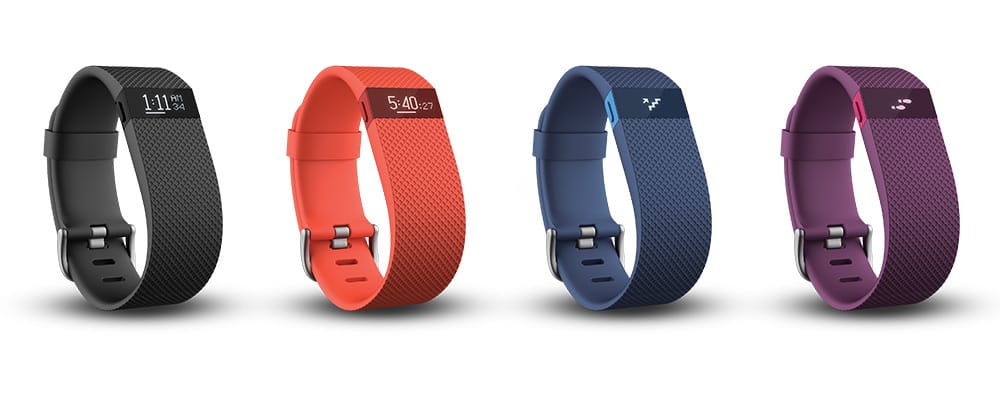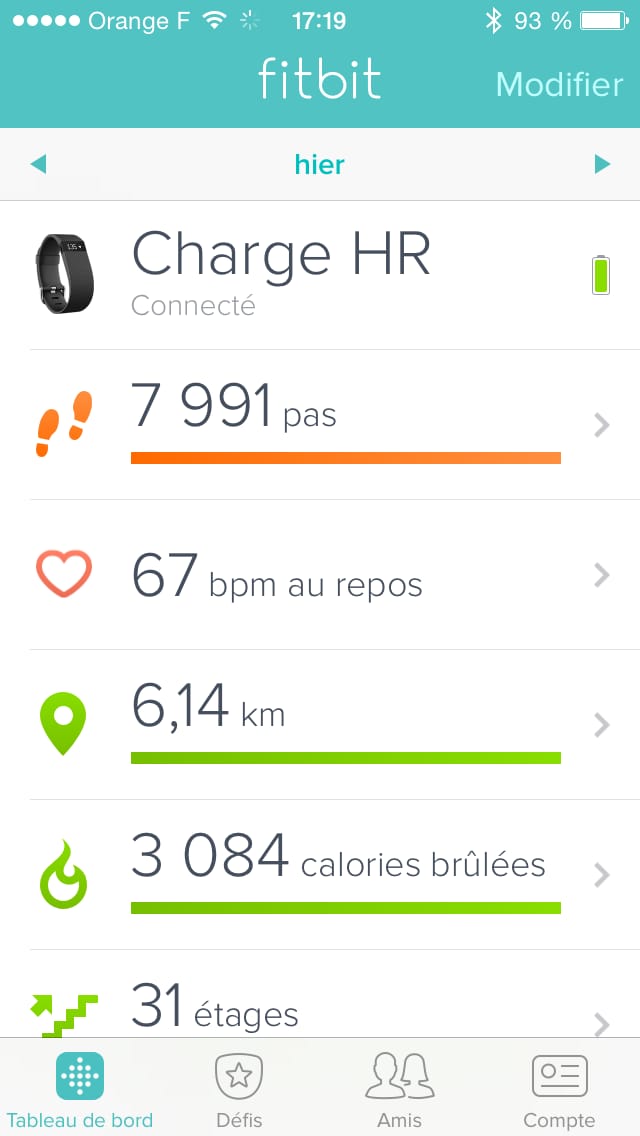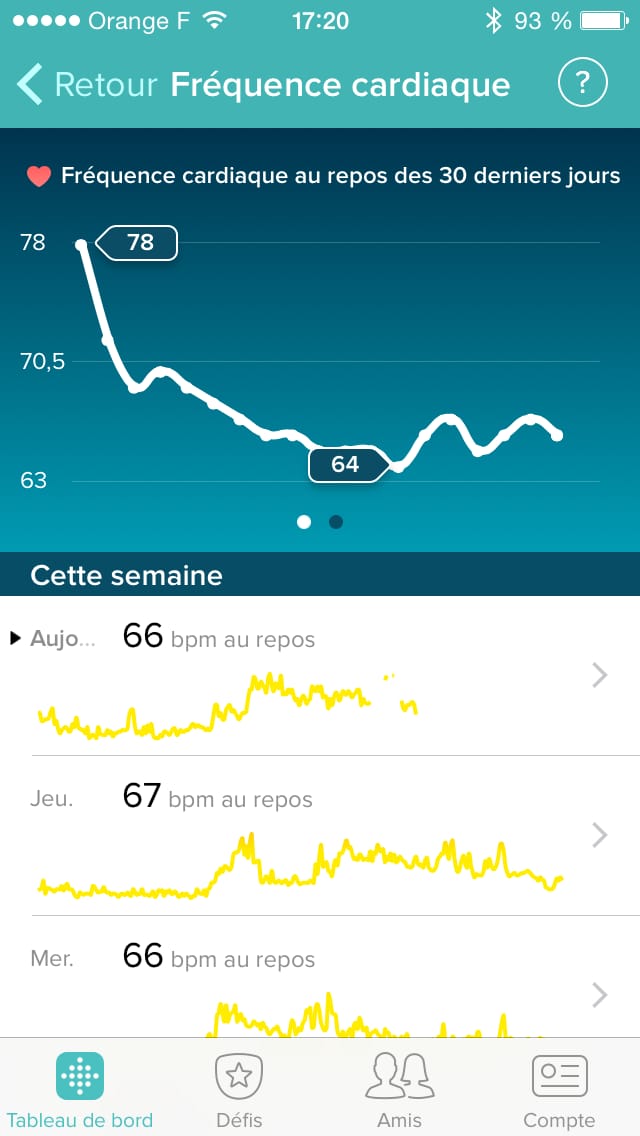- Health Is Wealth
- Posts
- Fitbit Charge HR Review
Fitbit Charge HR Review
The Fitbit Charge HR is the first smart health connected bracelet to offer continuous heart rate monitoring. After the known concerns with the Force, Fitbit is playing big with its new range. Here is my assessment after several weeks of use.
Installation
The Fitbit Charge HR is sold at a price of € 149. In the box, you will find a bracelet (two sizes exist), a USB / Bluetooth dongle and the charging cable.
As with all Fitbit bracelets, you can go through your computer for the first configuration. Handy for those who don’t have a smartphone. You have to connect the USB dongle, download the Fitbit Connect application (compatible with Mac and Windows) then do the classic steps: account creation, pairing of the sensor, etc. You can also install from the mobile app (available on iOS, Android and… Windows Phone!) and start using your Fitbit Charge HR.
Be careful to indicate the arm on which you carry the Charge HR, I had not done it at the beginning, the application thought that I was carrying it on the left and not on the right and the eccentric data (I speak a lot with the hands) .
Design and Hardware
Fitbit is listening to its users and has solved a major problem with Flex: the system for attaching the strap is today the same as a classic watch, and it’s much more pleasant in everyday use. The Fibtit Charge HR is almost twice as wide as the Flex, even if it remains discreet on the wrist. The Fitbit Charge HR is only water resistant, you can’t swim with it.
Another difference with the Flex: the bracelet is not replaceable, because everything is embedded in it. The bracelet is not smooth, patterns are present, you decide if you like. For now, the bracelet is not available only in black, blue, purple and orange models should arrive before the end of March. Big flat in my opinion, the USB cable for charging is proprietary: if you lose it, you will have to order a new one. It’s a shame, especially since the one provided is very short.

features
This bracelet is the big brother of the Charge and has all its characteristics. monitoring activity with steps, distance, climbed floors, calories burned, active minutes. The sleep tracking in automatic mode with detection of bedtime, waking time, the quality of your cycles (light or deep) and a vibrating alarm for waking up. The HR stands for “heart-rate” and this is the real plus of this bracelet: it constantly detect your heart rate. This is a feature that I particularly expected on these new generations of smart health connected bracelets (with the Jawbone UP3) and it is a real success. I had read in a few places that there could be a difference between the detected rhythm and reality, I tested with a classic cardio belt and the results are almost identical (except 1 or 2 pulses). This feature works very well, and Fitbit succeeded because the battery lasts as long as expected, between 4 and 5 days, despite the constantly active heart sensor.
On the screen, you can scroll through all this information with the small button. A shortcut, accessible by double-tapping it, allows you to access your favorite data (my heart rate). Everything is very responsive and you can choose to display only the information that interests you to save time.
The Fitbit Charge HR emits a small vibration when you reach the target pace you’ve set. Little info that I had not seen, there are 4 different pictograms which are placed next to the measurement of your heart rate, they tell you the area you are in (classic, fat burning, cardio, or high density). Interesting for cardio sessions.
In addition to that, the screen shows the time and date (you can choose between several displays) and the Fitbit Charge synchronizes wirelessly with Bluetooth 4.0. Last functionality of the bracelet, with a long press, you can trigger a sports session. Currently only walking, hiking and running are available.
Application
The application is the same for all their products, so I find my Flex habits. It simply transcribes the raw data collected by the bracelet. You will therefore be able to see the steps taken every day, every week, etc. You will also be able to see the quality of your sleep. I’m not a fan of the interface at all, but it’s subjective again. The lack of a coach like Withings or Jawbone is harmful and the challenge system is not very fun (Fitbit told us that they were working on new social features at CES).

The heart rate data is, in my opinion, poorly used, you only access a curve of your daily rhythm without being able to go further. By cons in a sports session it is interesting to see how the heart rate changes. This data will certainly be better used on the Fitbit Surge, which will also be able to give information on the pace, the route, etc. You can also launch a sports session from the application, which will allow you to have a real GPS track.

For those who wish to go further, you can monitoring your diet, your water consumption and the Fitbit ecosystem is open to third-party apps, so I can with the weight data collected by my Wihtings scale in my app. This openness is a great thing for quantified self in general. The strong point of the Fibtit mobile application is that synchronization is very very fast, which is pleasant on a daily basis.
My opinion
Until now, the different Fitbit products I had tested (Flex, Zip, One) had never convinced me. The Fitbit Charge HR has arrived! Cardiac data is a real plus, autonomy is good, the bracelet can be discreet and the automatic sleep mode is pleasant. We are waiting for the release of its direct competitor (the Jawbone UP3) to compare them, but Fitbit has just taken the lead. With an improved application, and a waterproof bracelet, we would be close to perfection for a smart health connected bracelet. It remains to be seen whether this type of wearable device has a real future, as smart health connected watches are increasingly able to follow physical activity by providing additional functionality.
[content-egg-block template=offers_list]
AB SMART HEALTH REVIEW